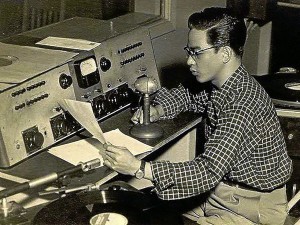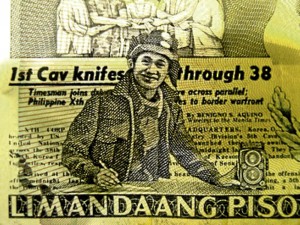Probably the most coveted camera ever made
In the autumn of 1952, my craving to own a Rolleiflex was getting difficult to bear. That was the year the cold war was heating up, General Dwight Eishenhower and Illinois governor Adlai Stevenson were battling for the US presidency, and I was studying public relations at the Boston University graduate school.
Then one day it became out of the question. Our instructor in photo journalism had required us students to buy or rent a professional camera that could take photos of people, events and grandiose moments. In other words if I really wanted to learn how to tell stories using photos, I had to have either a Canon III-A, a Leica III-f, a Nikon SP, a Hasselblad C or a Rollei Automat twin lens reflex (TLR). I chose to have the Rollei.
The price of the Rolleiflex Automat with 75mm f3.5 Carl Zeiss Planar lens was $325 at Filene’s department store. This was two times my monthly stipend as Fulbright and Smith-Mundt fellow of the US State Department. I regaled the saleslady with stories about how poor foreign students were and sweet talked her to give me a discount but all she could offer was 10 months installment at $34 a month.
I gave her my first $34 payment, quickly signed the installment agreement and walked out of the store. It wasn’t like winning the Mega Lotto but it was something close. With my prized Rolleiflex in my hands, the clouds suddenly opened up and a bright light shone down on me.
In the week that followed I felt like a little boy with a marvellous toy. I would kiss my Rollei like British Open champion Darren Clarke kissed the Claret Jug before he raised it for everyone to see. I would tinker with the self-timer, test the film winding mechanism, align the needle in the built-in light meter, and dust off the lens with an air blower or a soft camel’s hair brush.
Article continues after this advertisementI would stand in front of the mirror, look at myself and the Rollei on the 6cm x 6cm glass viewfinder, focus on the tip of my nose, compose a self-portrait and click the leaf shutter. Ah, but the ssshikk sound of the shutter was as quiet as a stolen kiss. Many times I would open the back of the camera, set the aperture to the widest diaphragm while pointing to a light source, and fire the shutter at all speeds from one second to 1/500 of a second to see if the mechanisms were all working.
Article continues after this advertisementFrom Brookline where I lived, I would take the trolley on weekends and roam around the Boston area taking pictures of almost everything: a rowing competition on the Charles river, a baseball game at Fenway Park, a walk at Boston Public Garden, Copley Square and Faneuil Hall Marketplace. Even in school where I was a radiobroadcasting intern, I would set up my Rollei on a tripod and take pictures of myself while doing board work over WBUR. I had set up a fully equipped darkroom in my boarding house and would spend long nights developing my films, printing them on matte or glossy papers. The best part was in cropping and achieving the right contrast with test strips and exposure reduction techniques.
Shooting waist-level with the Rollei allowed me to covertly photograph strangers that I was shy to confront head-on. I would point my Rollei lenses 90 degrees to my left while looking straight forward. My subjects would sometimes wonder: why was I taking photos of a fence or a road? They didn’t know I was taking pictures of them. But this kind of street photography had a feline slyness that would drain my time. The famous French photographer Henri Cartier-Bresson described it like this: “The photographer must lie in wait, watching out for his prey, and have a presentiment of what is about to happen.”
When the first Rolleiflex was introduced in 1929, it must have shook the photographic world like a 7.8 earthquake on the Richter scale. From 1945 until 1960, there was no newspaper or magazine that did not have some Rolleiflex photos, no photographer who would not want to master the use of the Rolleiflex, and no amateur who would not greedily desire one.
Even President Aquino’s father, our beloved hero Ninoy Aquino, had the image of a swashbuckling journalist with a Rolleiflex slung over his curdoroy jacket. Look at your P500 bill and you will see Ninoy with his Rolleiflex camera. In case you didn’t know, Ninoy was then an 18-year-old adventurous reporter who was assigned by the Manila Times to cover the Korean War in 1950-51.
You may not be an ardent follower of photography, nevertheless your mind’s eye would still be full of Rollei photographs done by Richard Avedon or Irving Penn. The provocative calendar photos of Marilyn Monroe, the head shots of Elizabeth Taylor and Sophia Loren, the cavorting glances of Suzy Parker who was the decade’s most famous model, the portraits of US presidents, and the pictures of thousands of fashion models in Vogue and Harper’s Bazaar were the Rolleiflex images captured by these two giants of 20th century photography.
Avedon and Penn were a unique breed who had a style of their own, a way of seeing things which belonged only to them. Their approach to photography identified their works and became their signature. In the eyes of his peers, Avedon particularly was the most important fashion photographer of all time. He was never displaced by younger pretenders. He worked with complete concentration to bring out the distinctive quality of his photographs. Once he put a model on roller skates and sent her cruising down the streets of Paris. At another time his model was frolicking between two wild elephants. These two were “picture-makers” rather than “picture takers.” They did not “take” pictures stealthily in the streets nor catch life on the wing as it flies past the camera lens. They preferred to “make” photographs as carefully as an architect would design a house.
Of course the quality of a picture does not depend on the camera but on the imagination of the photographer. The camera is only his tool, like the brushes of the painter, the chisels of the sculptor, and the clubs of the golfer. With a rusty six iron pulled out from the attic, Roy McIIroy’s game will beat the hell out of my game any time. Still, you have to feel comfortable with your camera. The lack of interchangeable lenses and automation of the Rollei allowed me to concentrate on composition and lighting. Most of the time I would set the aperture at f/8-f/ll and the speed at 1/100 using fine grain ASA 50 film. There are no batteries to go dead, no electronics to fry, no dark slides to lose. The large 6cm x 6cm film size gave me cropping flexibility and always delighted me with sharp and smooth enlargements even up to 24 by 24.
Today everything seems to have gone digital. Cameras now capture images electronically and not on film. We don’t take pictures and develop them in the darkroom anymore. Instead we rapid-shoot photos and edit them by Aperture or Photoshop. Rather than the Rolleiflex I now use Canon 5D Mark II for professional still shots and to produce Indie films. For photos of friends and officemates, I prefer to use the Canon Powershot G12. It can zoom, focus, set the exposure, and advance the frame automatically which even the Leica MP could not do. But that’s another story.
(The author is president & CEO of Agatep Associates, a public relations firm, and group chair of Euro RSCG Philippines, a marketing services and advertising agency affiliated with Euro RSCG Worldwide. He was a professor of PR and Communication Arts at the UST Faculty of Philosophy & Letters, Assumption College and St. Paul University.)


